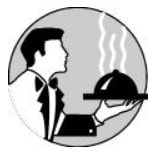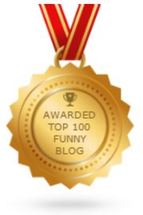|
This past weekend I saw the movie 1917 directed by Sam Mendes that he co-wrote with Krysty Wilson-Cairns. It’s breathtaking. Just remarkably done. A friend who's an Academy voter described it as "Magnificent." We're both right. If you've seen the TV ads and find it interesting -- the story (based on a range of true events, many told to Mendes by his grandfather) is about two British soldiers sent off to warn a battalion of 1,600 not to attack the next day since they would be walking into a trap where they'll be massacred -- I can only say that it is far, far, far better than the ads. Mostly, that's for a technical reason. I sat their in awe, since it appears that the movie is made with only only three or four shots, each in one very long take. (The opening shot seeming to be 26 minutes long, with the second shot 40 minutes.) That turns out not to be the case, and actually is many more shots that are somehow, almost invisibly edited together seamlessly (which is a remarkable feat until itself), though most shots are still very long compared to a normal movie, ranging from a couple minutes up to nine minutes. It grabs your interest and flows beautifully, unrelentingly. What this does is put you emotionally inside the story. It's not told from a first-person viewpoint, but it forces you to see everything from those two soldier's perspective, not cutting to long shots or from the angle of others, or back to other action. It makes everything incredibly visceral, and -- with one obvious cut "to black" for a few hours to pass -- it's all done in real time. And keep in mind that the intricacy of the undertaking isn't for a "drawing room" story, but a massive WWI outdoor adventure. There is one sequence with a dogfight that's utterly stunning. (The trailer includes a part of it, but only part.) 'The cinematography by Oscar-winner Roger Deakins is brilliant, and the two young actors are superb. One of them in particular, George MacKay, deserves consideration for Best Actor, if only for the shear technical challenge of continual long, intricate takes, though he's excellent on all levels, though I'm sure he'll get overlooked largely for being little known, and there are so many others to choose from. Here's the trailer. You'll see the quality of the filmmaking, but other than that it doesn't even begin to do the movie justice. It's all a collection of short shots edited together. But as I said, the movie is not that. It's done in what looks like a fluid three or four shots without cutting. Better perhaps is this four-minute "behind-the-scenes" featurette on how they made the thing. Just from this small bit, you'll get at least a sense of the undertaking and how richer the film is than it appears in the ads or trailer. The next day, I saw A Hidden Life, written and directed by Terrence Mallick. It's really loooooong. Probably too long (just under three hours), but absolutely gorgeous, beautifully done, very moving and (being Mallick) elegiac. It probably plays best on a big screen since there’s scope to it, despite being such a personal story, though I think if given a choice and I had the DVD I’d watch it at home so that I could split it over two nights. Also based on true events, it tells the story of an Austrian farmer who is a conscientious objector, refusing to fight for the Nazis in World War II, and how that all impacts his life and family, in his neighborhood and prison. And also the importance that such hidden lives by unknown people help create in the fabric of life. How long ago Mallick began planning the film, I don't know, so it's hard to tell how much of it might have been inspired by the resistance to Trump, or if that's an overlay that audiences may bring to it. The film really is beautifully done, though, and I enjoyed it, just…loooooooooong.
0 Comments
Leave a Reply. |
AuthorRobert J. Elisberg is a political commentator, screenwriter, novelist, tech writer and also some other things that I just tend to keep forgetting. Feedspot Badge of Honor
Categories
All
|
|
© Copyright Robert J. Elisberg 2024
|






 RSS Feed
RSS Feed